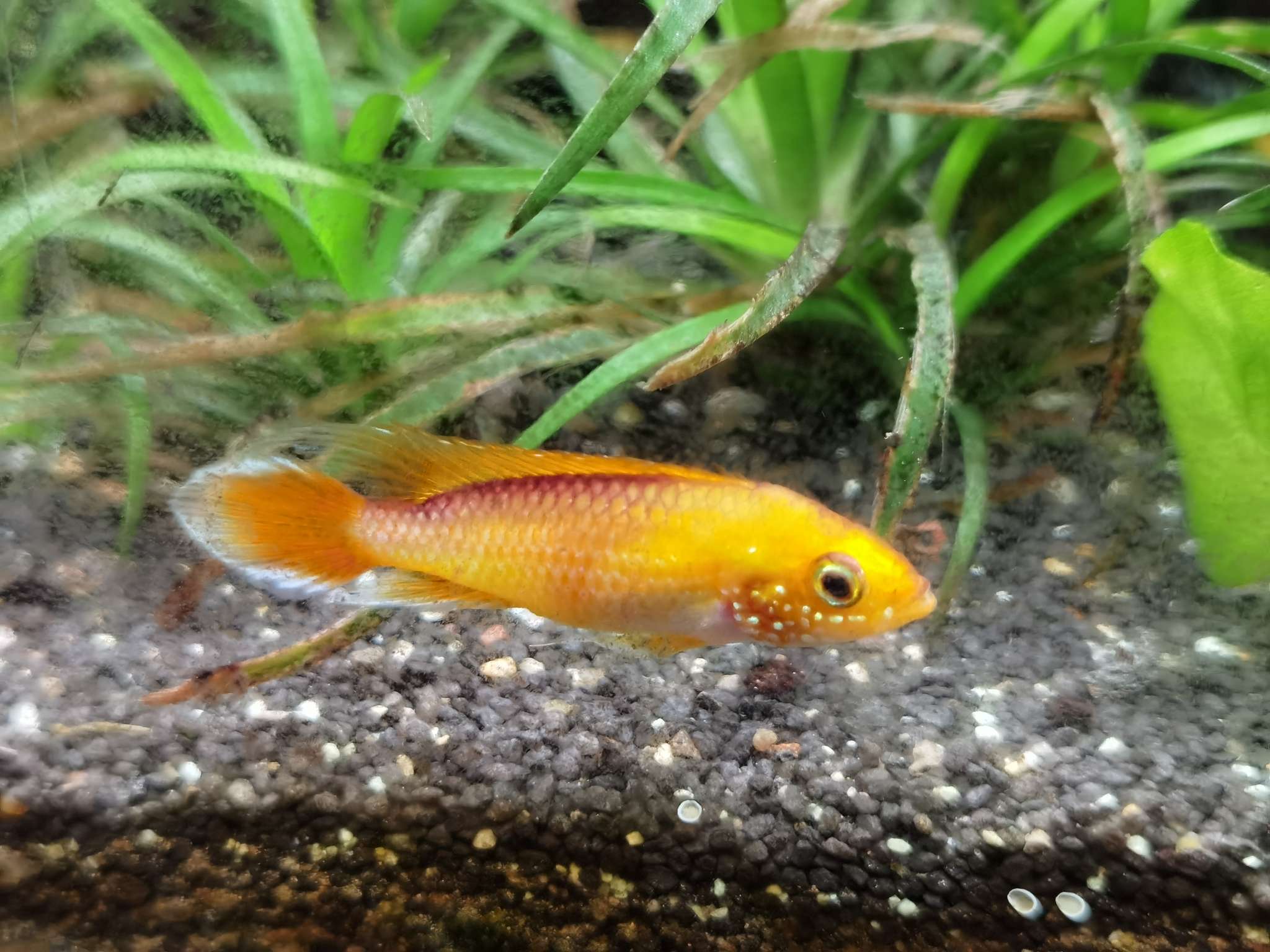Agassiz's dwarf cichlid (Apistogramma agassizii)
Last weekend I added a new type of fish to my aquarium - the Agassiz's dwarf cichlid.
Agassiz's dwarf cichlids are native to the Amazon River Basin in South America, specifically in Brazil, Peru, and Colombia. They are typically found in slow-moving or still waters such as small streams, creeks, and ponds, particularly in areas with thick vegetation and leaf litter. These fish are well-adapted to their environment and can be found in a variety of water conditions, including clear and tannin-stained waters.
In their natural habitat, Agassiz's dwarf cichlids are known to be secretive and territorial. They are often found hiding among the vegetation or in small crevices in the rocks or wood. These fish are also known to be adaptable and can survive in a range of water conditions, including varying pH levels and temperatures.
Agassiz's dwarf cichlids play an important ecological role in their natural habitat, helping to control populations of small invertebrates and algae. They are also an important food source for larger fish and other predators in the area.
These cichlids are known for their vibrant colors and distinctive body shape, with males being more brightly colored than females and having longer fins. They can grow up to 3 inches (7.5 cm) in length and have a lifespan of 3 to 5 years.
In their natural habitat, Agassiz's dwarf cichlids are found in slow-moving or still waters such as small streams, creeks, and ponds. They are omnivores and feed on a variety of food including small invertebrates, algae, and other plant matter.
Agassiz's dwarf cichlids are popular aquarium fish because of their striking appearance and relatively easy care requirements. They prefer soft, slightly acidic water with a pH between 6.0 and 7.0 and a temperature range of 75 to 82 degrees Fahrenheit (24 to 28 degrees Celsius). They should be kept in a tank with plenty of hiding places, such as caves or plants, as they can be territorial and may become aggressive towards other fish.
Breeding Agassiz's dwarf cichlids can be challenging but rewarding. They are known to form monogamous pairs and will defend their eggs and fry vigorously. Females will lay their eggs on a flat surface, such as a rock or piece of wood, and both parents will care for the young.

